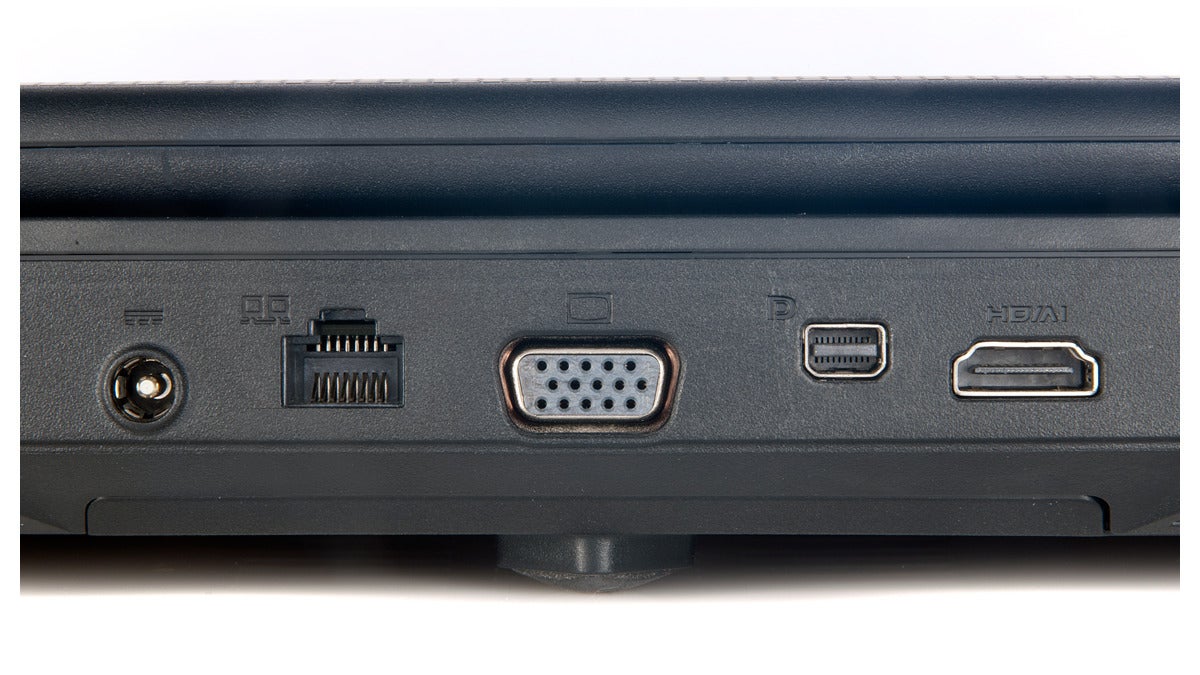Three laptop ports you can’t live without
A laptop isn’t just a personal, daily workhorse. It’s your portable home base with access to personal documents, work documents, family photos and videos, favorite music, movies, and more. That’s why it’s critical your trusty machine has everything you need whether that’s important software, a speedy Wi-Fi module, or a 15-inch 4K screen. While you’re deciding on storage, RAM, screen size and resolution, and processor for your next laptop don’t forget about the ports.
A laptop’s port selection can vary from one, single USB Type-C port, to a ridiculous number ports lining up and down every side of the chassis.
Whether it’s one or 11, it’s not so much how many ports you have, but the quality of those ports. We’ve put together a list of the three critical USB ports that you simply cannot do without in 2021. Why three? As laptop makers fight to make their clamshells thinner and thinner the actually space for ports gets smaller and smaller. With choice being restricted these are the three ports we believe must be there. This list will not include basic items such as a headphone jack or the connection for your power adapter since those items go without saying. Here, then, is our take on the three ports everyone must have.
Type-C USB 3.2 or better
 Asus
AsusThe ports on an Asus ROG Zephyrus G15.
Yes, we’re still living in a world where standard USB is king, and yes it works just fine. But laptops work just fine for reading email on the go, yet they don’t work as well as a smartphone. It’s the same thing with USB. If you’re a buying a new laptop you really must get one with a Type-C port using at least USB 3.2.
These more modern ports are speedy for transferring files, which can save you a ton of time. They can also come with support for something called Alternate Mode or Alt-Mode that can run a video signal via HDMI or DisplayPort (it can support VGA too, but let’s not talk about that). The ability to do double duty makes it more useful; however, Alt-Mode is not automatically built-in and must be specifically supported by the manufacturer. If you want this feature, you’ll have to do your research to make sure your laptop supports it. The good news is that many do.
On top of that, USB 3.2 supports the USB Power Delivery specification with USB 3.2 Gen 2 supporting up to 100 watts of power. Meaning it can charge devices and even charge the laptop itself if the manufacturers are so inclined.
You just can’t beat a USB 3.2 port for usefulness and flexibility. Well, that’s not quite true. There is USB4 and Thunderbolt 4, which are even speedier at data transfer, support USB and Thunderbolt devices, as well as power delivery and external displays.
Technically, Thunderbolt 4 is a different kind of port than USB, but since everything is Type-C anyway we’ll lump it all together as one big option for the purposes of this article.
HDMI
 Adam Patrick Murray / IDG
Adam Patrick Murray / IDGHDMI is the most common display port to find out there, and connecting your laptop to a larger screen from time to time is a must.
If you work from home with a laptop, and you haven’t got a bigger screen to output your desktop you really must get one. Even if you don’t have a fancy dock, putting your laptop to the side of the desk at home to work on a larger screen and better keyboard makes a world of difference.
When you’re traveling being able to pump Netflix or Disney Plus from your laptop into those cheap-o 1080p TVs is also a big benefit. And oh yeah, let’s not forget about being able to plug into a projector for presentations.
HDMI is where it’s at.
Ethernet
 Alex Campbell
Alex CampbellA 2017 System76 Galago Pro with a collapsible Ethernet port.
Wi-Fi is fantastic when you’re on the go, but it’s no substitute for a hard-wired connection to the Internet. Ethernet has a more stable signal, it’s generally faster than a wireless connection, and it’s usually more secure. You can get by fine with Wi-Fi for most things, but if you’re laptop is also for gaming then a plain old Ethernet port is a must.
An Ethernet port/jack does add some bulk to a laptop’s chassis–even the expandable models do–but it’s worth it for critically fast and stable Internet when you need it.
The others
 Robert Cardin
Robert CardinThose are our top picks for the must-have ports for your laptop. Depending on your situation there may be others. An uber-cheap Windows 10 clamshell with 256GB storage or less would do well with an SD card slot. If you have to interface with a lot of legacy equipment then an old fashioned VGA port may be the simplest solution. And let’s not forget the hallowed headphone jack, which anyone with high quality headphones may want–unless of course they’re running an external DAC off a USB port.
Those are all nice (well, not counting the VGA port), but they just aren’t as critical for your next laptop. If you’re in the market for your next portable PC make sure you’re covered with the three ports above, with special attention to getting at least one port that’s USB 3.2 or higher.
For all the latest Technology News Click Here
For the latest news and updates, follow us on Google News.
